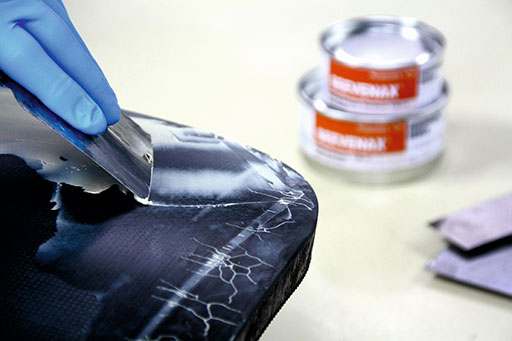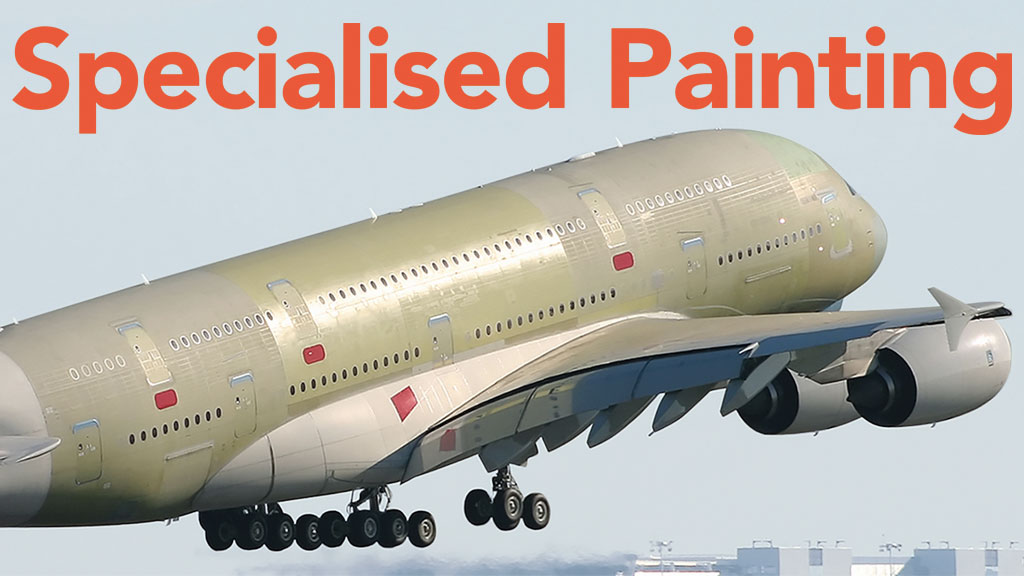Paint manufacturer Mankiewicz explains paint selections for external and internal applications.
Structural parts define the shape of an aircraft’s structure and all metal parts require coating that prevents corrosion for an aircraft’s lifetime. The changes to new materials used for structural parts pose challenges to paint manufacturers.
Originally founded in 1895 as an independent subsidiary of English paint factory Robert Ingham, specialist paint company Mankiewicz was acquired by Ottmar J. Grau in 1930 and has been managed by the current CEO, Michael Ottmar Grau, since1980.
Mankiewicz has recently celebrated ten years of providing water based structural parts coatings to the aviation industry. As well as structural parts, the company provides paints for aircraft exteriors and interiors. In principle a distinction is made between the surfaces of an aircraft’s exterior, the interior cabin and its structural parts. The latter are skeletal elements of the construction that give the aircraft its shape and are covered by the exterior skin.
Replacing defective structural parts is extremely costly, both in terms of time and money and this is why dedicated coating systems are used that yield very high levels of corrosion protection. Mankiewicz provides coatings for such parts that fit the OEM’s specifications.
In general, aircraft are made from the lightest possible materials, to maximise their aerodynamic lift. These materials must also possess the strongest structural properties possible, to withstand the loads undergone at take-off, during flight and at landing. New materials are constantly being developed by aviation research that are ever better able to meet these demands. The challenge that Mankiewicz faces is to keep pace in developing optimised coatings as the materials and processes evolve.
Taking Out Toxic Solvents
“We accelerated the development of water-based paints from quite early on and now many aircraft OEMs possess qualifications for our products. This year we are celebrating ten years of water-based paint systems for structural parts – the emission of several thousands of tonnes of organic solvents have already been saved thanks to the use of water-based paints,” explained Sven Schröder, key account manager for structural parts within the Aviation Department of Mankiewicz Germany.
‘Coating Concepts of the Future’ involve chromate-free corrosion protection for the various aluminium alloys in conjunction with suitable pre-treatments. The coatings have the task of protecting the aircraft for a service life of some 25 years against corrosion as well as mechanical and chemical stress. This includes the impact of fuel, oils, hydraulic fluids, battery acids and de-icing agents. In addition to resistance to the stresses mentioned, further requirements include excellent adhesion, elasticity and thermal stability, because the coatings must follow the sometimes extreme movements of an aircraft’s fuselage: Depending on the type of aircraft the wing tips can move several metres up and down and the fuselage itself stretches during flight and shrinks again on the ground. Due to their particular environmental conditions aircraft undergo extreme thermal stress. Temperatures can vary between +70 °C on the ground in sunshine and -55 °C while in flight. Mankiewicz designs its structural and exterior paints to meet such challenges.
Diversity challenges
The large diversity of materials and pre-treatments in use presents one of the challenges in developing coating systems for structural parts. “Aluminium and titanium are primarily used for metal structures, whereas fabrics of glass and carbon fibres are the main non-metallic materials,” explained Schröder. “The latter are impregnated with resins and hardened in autoclaves during manufacture or already impregnated fibres are employed. In some cases honeycomb structures are also laminated, in order to save weight while increasing stiffness.”

The material and condition of a structural part essentially determines the pre-treatment and selection of the coating. Aluminium alloys, for example, are pre-treated with chemicals and depending on the application they are anodized using chromic acid, phosphoric acid or sulphuric acid. Chemical conversion layers are also used for very large structural parts or for extra protection schemes. The primer is applied onto the prepared substrates. In this case, said Schröder, Mankiewicz uses coatings that are solvent or water-based with 2K epoxy resin coatings. These also contain chromates, which are presently undergoing a critical review under REACH (The Registration, Evaluation and Authorisation of Chemicals). However, due to the extremely strict demands for certification of aircraft, there is currently no alternative available – for this reason, together with other users and manufacturers, the company advocates an authorisation of chromates to allow these systems be produced and applied as an exception for a further seven years.
In the case of structural parts of non-metallic materials the first step is to eliminate the release agents used during production without leaving any residue. The surfaces of these parts often exhibit defects and irregularities and require preparation before painting can commence. Mankiewicz has developed special primer and filler systems to cover the diverse requirements. In addition to a smoothing compound there are spray fillers and pore fillers for eliminating imperfections. To obtain a smooth and clean surface, the fillers applied are mechanically ground. A coat of chromate-free primer is subsequently applied to the surface now free of defects.
The next decade in the aviation industry is set to be as challenging as the last for Mankiewicz. Schröder said that the next steps for the business include the further reduction of process costs and growing along with the worldwide branching out of supply chains for structural parts. Moreover, the automation of mixing and application processes are an important development to cope with the current ramp-up of aircraft production. And last but not least, time will show if the use of composites will pay off in the long run.
